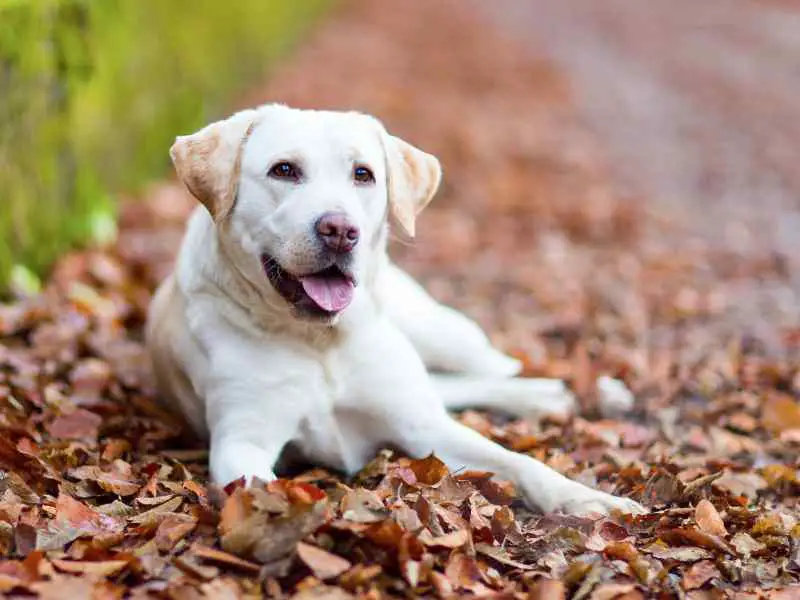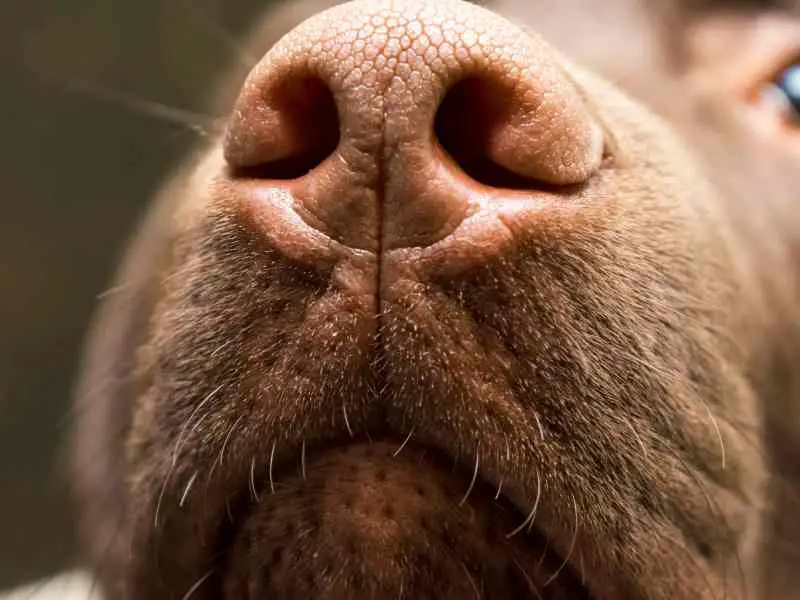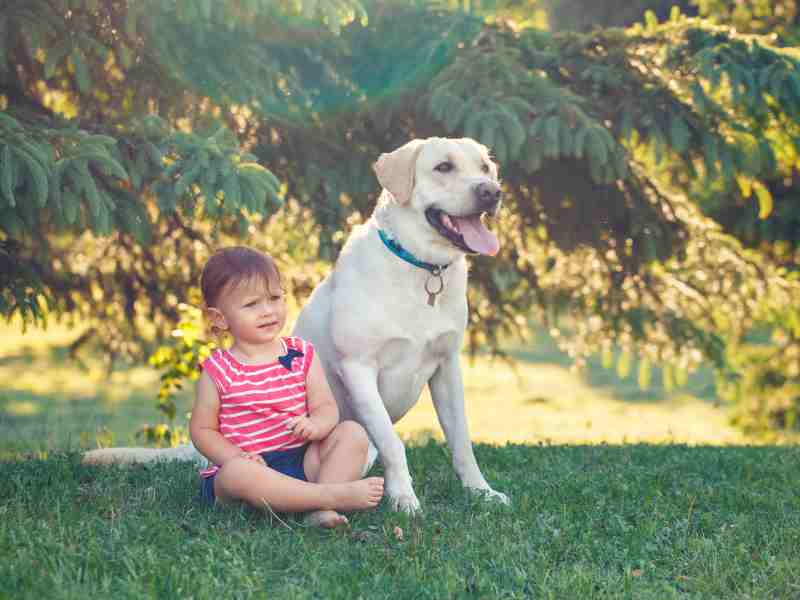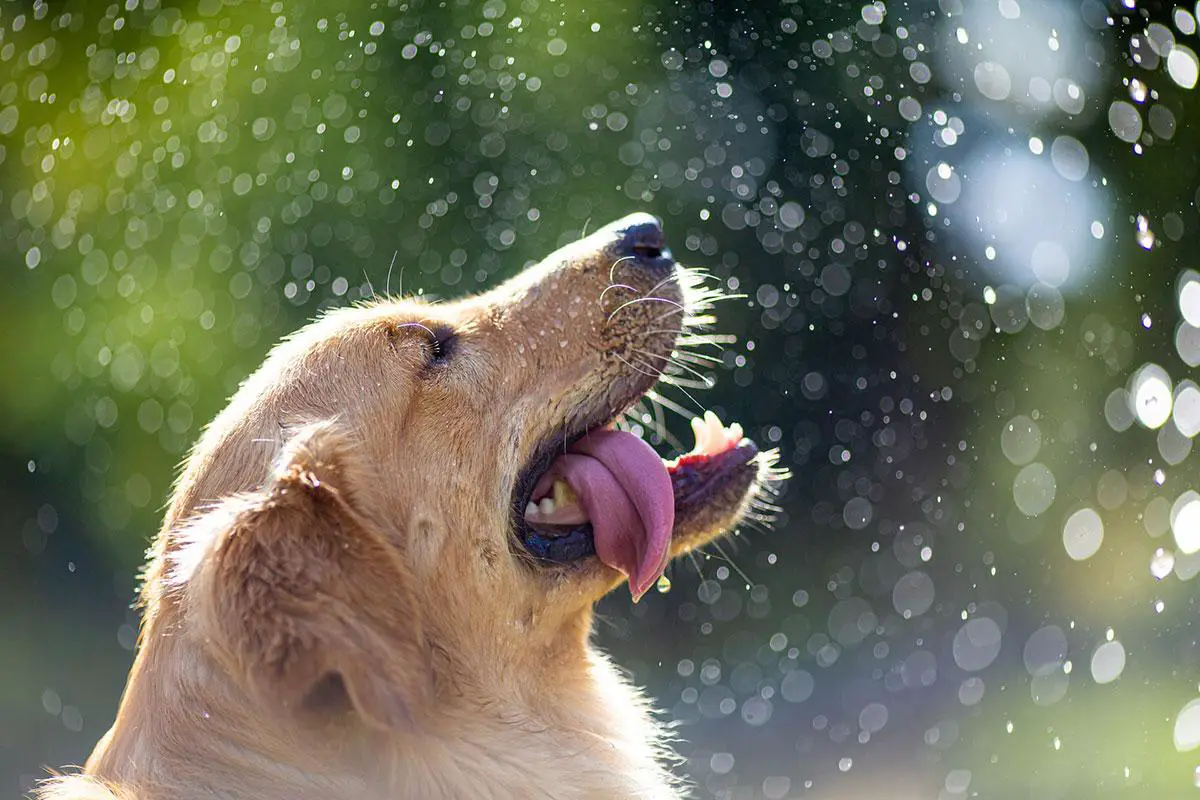Have you ever wondered why your lab’s nose suddenly turned black to pink?
The color of a dog’s nose can change for various reasons, and understanding these changes is important for maintaining your dog’s health and well-being.

The pigment of a dog’s nose can be affected by autoimmune disorders, temperature sensitivity, and even the type of food and water bowls they use. These changes in nose pigment can also indicate potential health issues that need attention.
This article will explore the reasons behind a dog’s nose pigment changes, potential health issues linked to these changes, and how to maintain your dog’s nose health, especially during the winter months.
Understanding Nose Pigment
Dogs’ noses can be a kaleidoscope of colors, primarily determined by pigments in their skin cells. Pigments are like natural paint; melanin, the most common type, shades noses in tones of black or brown, while lesser amounts lighten the palette to pink, liver, or blue.
This is more than a cosmetic trait for our canine companions, as nose pigmentation is critical for temperature control, protection against irritants, and underpinning their remarkable sense of smell.
Some dogs may experience what’s referred to as ‘snow nose’ or ‘winter nose,’ a temperate dance of colors where their nose may lose some of its dark pigment in colder months and transition to a lighter shade.
This condition, interestingly, poses no health concern and usually reverts to the original color when the days get warmer.
However, caution is necessary in cases of a Dudley nose, which is a permanent lightening of the nose found in certain breeds like Golden Retrievers and White German Shepherds.
This genetic de-pigmentation increases their risk for skin conditions, including cancer, so sun precautions are important for these dogs.
Remember, while a pink nose may be normal for some, it’s wise to consult a vet if you’re concerned about a sudden color change in your dog’s nose.
They’ll science out if it’s an everyday quirk or a health issue needing attention.
Autoimmune Disorders and Nose Pigment Changes

Dogs can exhibit changes in nose pigment due to various causes, including autoimmune disorders. Autoimmune disorders like vitiligo can lead to hypopigmentation or complete depigmentation.
This results in a distinct transformation of nose color from its normal dark shade to a lighter pink hue.
Conversely, some autoimmune conditions may cause hyperpigmentation, leading to unusually dark areas on the nose or skin. It’s crucial to note that these pigment changes may come with other health indicators.
If observed, it’s advisable to seek veterinary expertise.
Affected dogs with autoimmune-related pigment changes may face increased risks, including sensitivity to sunlight.
To safeguard these canines, owners should contemplate sun protection practices.
Important Measures for Affected Dogs:
- Regular vet check-ups
- Monitoring for additional health symptoms
- Sun protection solutions
Potential Risks:
- Sunburn susceptibility
- Other autoimmune symptoms
Owners should closely watch their dogs’ nose pigment and consult with their vet for tailored advice and care.
Snow nose refers to a condition in which a dog’s nose lightens from a dark color to light brown or pink. Also known as winter nose, this hypopigmentation is a form of vitiligo (a rare skin disorder). It is usually a temporary condition and is not a health concern. Snow nose in dogs is purely a cosmetic issue.
https://www.thesprucepets.com/what-is-snow-nose-in-dogs-3384931
Potential Health Issues Linked to Nose Loss of Pigment
A change in nose color, especially from black to pink, in dogs can indicate various health concerns. Here’s a summarized look at potential issues:
- Sunburn and Skin Cancer: A pink nose is more susceptible to sunburn, which can escalate the risk of skin cancer in dogs.
- Autoimmune Diseases: Diseases such as lupus can cause the immune system to attack the nose’s pigment cells, leading to depigmentation.
- Fungal Infections: These infections can strip the nose of its color and if left untreated, can lead to serious health complications.
- Dudley Nose: This genetic condition results in a loss of pigmentation. Dogs with a Dudley nose may face an increased risk of skin cancer due to sun exposure.
- Other Conditions: Vitiligo, discoid lupus erythematosus, pemphigus, and cancer are also associated with changes in nose color.
When to Seek Veterinary Advice:
- Observe the onset of color change
- Notice other signs of illness
- Increase in nose dryness or cracks
Conclusion: A pink nose on your dog can be more than just an aesthetic change; it may be a clue to underlying health issues.
If you notice a lighter nose, consult your vet to ensure your pet’s best health.
Protecting Your Dog’s Nose in Cold Weather
During the winter months, dog owners should be vigilant about protecting their canine companions from snow noses, a condition where the dog’s nose loses pigment and turns pink.
While often temporary and more common in breeds like Golden Retrievers and Labrador Retrievers, this lighter nose can be sensitive to sun damage, especially in cold climates with intense reflections off the snow.
Practical Tips for Protection:
- Limit sun exposure during peak winter sunlight.
- Use dog-friendly sunscreen on your dog’s nose—a small dab can prevent sunburn.
- For breeds acclimated to cold weather, remember that even though nose pigment changes might be seasonal, care is still necessary.
Additionally, choosing the right feeding bowls can make a difference. Opt for stainless steel or ceramic instead of plastic bowls to avoid any chemical leaching that might affect nose color.
Table of Nose Care Essentials
| Seasonal Tip | Action Item |
|---|---|
| Snow Nose Observation | Limit direct sunlight, apply sunscreen |
| Type of Feeding Bowls | Use metal or ceramic bowls |
| Observing Sudden Changes | Report to vet, check thyroid |
Remember, any abrupt changes in your dog’s nose appearance warrant a vet checkup.
Stay attentive to your furry friend’s needs to ensure they stay healthy despite the colder weather and darker days.
Temperature-Sensitive Nose Pigment

Dog breeds like Labrador Retrievers and Golden Retrievers may experience a fascinating condition known as snow nose or winter nose.
This involves their black nose fading to a lighter brown or pink shade as temperatures drop. This color change is linked to a less active enzyme, tyrosinase, vital for producing melanin, especially in cold climates.
Though the nose may darken again with warmer weather, this change is usually benign and can be part of the natural aging process.
However, dog owners should watch their pet’s nose for any signs of discomfort or potential skin issues accompanying the pigment alteration.
Fast Facts Table
| Fact Check | Quick Notes |
|---|---|
| Commonly Affected Breeds | Labrador Retriever, Golden Retriever, Siberian Husky, Alaskan Malamute |
| Seasonal Pigment Changes | Black to brown or pink in cold months |
| Enzymatic Cause | Reduced efficiency of tyrosinase in cold |
| Health Significance | Generally harmless, part of aging in some breeds |
| Owner Vigilance | Watch for discomfort, consult vet for skin problems |
Should issues like blistering or excessive dryness occur, seeking a veterinarian’s guidance is crucial.
Owners can ensure their canine friends maintain their snout health through the winter by remaining observant.
Ensuring Proper Hydration to Prevent Dry Nose
Maintaining the right hydration level in your dog is crucial to avoid the discomfort of a dry nose. Dehydration can strip the moisture from their nasal skin, leading to unpleasant dryness or even cracks.
With the dry winter air both outside and inside due to heating, your canine companion’s nose is at higher risk.
Ensure fresh, clean water is always available for your pooch to lap up.
Additionally, consider using a humidifier in your home to keep the air moist, providing relief not just for you but for your dog’s sensitive snout as well.
Remember to include hydrating nutrition options in your dog’s diet – wet dog food can be a great source of hydration, or simply adding a bit of water to dry kibble can make a significant difference.
Regular grooming rituals, including gently wiping your dog’s nose, will help clear away crust and dirt, maintaining hydration and overall nose health.
| Nose Care Tip | Method |
|---|---|
| Ensure Fresh Water | Provide constant access |
| Use a Humidifier | Maintain indoor moisture levels |
| Include Hydrating Foods | Wet dog food or water in kibble |
| Regular Grooming | Wipe nose with a damp cloth |
Recognizing Signs of Skin Disorders Affecting the Nose
A dog’s nose turning pink may signal a skin disorder. Depigmentation, shown as pink or white patches, is a common sign.
Look for dry, cracked skin around the nose, causing the dog to paw at the area. These skin issues can be a nuisance, leading to constant discomfort.
The nose’s texture might also change, becoming unusually smooth. Dogs may show pain and engage in frequent nose rubbing.
Other symptoms include nasal discharge, sneezing, sores, itchiness, or raised skin. Although less obvious, some dogs exhibit no signs of discomfort despite these changes.
Environmental elements, such as allergens, can provoke skin disorders, triggering nasal pigment changes.
In senior dogs, shifts in nose color could stem from hormonal alterations, medication reactions, or conditions like hypothyroidism that affect melanin production.
| Signs of Nose Skin Disorder | Symptoms |
|---|---|
| Color Change | Pink or white depigmentation |
| Texture Alteration | Smoother than normal |
| Pain Indicators | Nose rubbing, discomfort |
| Additional Symptoms | Discharge, sneezing, raised skin |
Consult a veterinarian for a definitive diagnosis to ensure your dog’s health and comfort.
Understanding How Nose Pigment Returns
Nose pigment changes in dogs, especially in breeds like Labrador Retrievers and Golden Retrievers, are not uncommon.
Known as snow nose or winter nose, these changes often occur during colder months.
Interestingly, the nose may transition from a deep black to a lighter pink shade and revert to its original color with the return of warmer weather.
| Potential Influences on Nose Pigment Return |
|---|
| – Seasonal Variation |
| – Genetic Predisposition |
| – Sunlight Exposure |
Seasonal variation plays a crucial role in these color shifts. During winter, a dog’s dark nose can fade to a lighter tone, often returning to its normal color as temperatures rise.
In some cases, genetic factors dictate these changes. Dogs may inherit Dudley’s nose, a permanent loss of pigment caused by genetics.
For them, the return of the original dark color isn’t possible.
Listed below are key considerations for nose pigment changes:
- Breed Susceptibility: Labradors and Goldens are more prone to pigment variation.
- Seasonal Effects: Winter often brings about a lighter nose.
- Genetic Constraints: Dudley nose, a genetic trait, makes pigment return unlikely.
- Sun Exposure: Minimizing sun is essential for dogs with Dudley nose to prevent skin cancer risks.
For dogs whose noses don’t regain pigment due to genetic reasons, owners should protect their nose health, as these breeds might be more sensitive to sunlight and other external factors.
Maintaining Your Dog’s Nose Health in Winter Months
During the winter, dogs can experience a phenomenon known as snow nose, where their black nose may lighten to a pink shade.
This is generally temporary, but older dogs may see a permanent change. To keep their nose healthy:
| Methods for Protecting Your Dog’s Nose |
|---|
| – Limit Sun Exposure |
| – Apply Dog-Friendly Sunscreen |
| – Use Metal or Ceramic Bowls |
| – Ensure Proper Nutrition |
Protecting your dog’s nose from the waning winter daylight is critical.
Use pet-safe sunscreens to prevent UV damage as melanin, which decreases in snow nose, would ordinarily offer protection.
Also, consult your vet for a thyroid check to rule out other health issues.
Switch from plastic to stainless steel or ceramic for food and water bowls to avoid potential reactions.
Your dog’s diet should be rich in nutrients that support skin health.
By following these simple care steps and seeking veterinary advice if needed, you can ensure that your dog’s nose remains protected and as healthy as possible despite the changes in weather or pigment.
- Sun Damage Precautions: Limit exposure and use sunscreen.
- Diet and Hydration: Focus on nutrition and hydration.
- Vet Checks: Regular checks can preempt health concerns.




